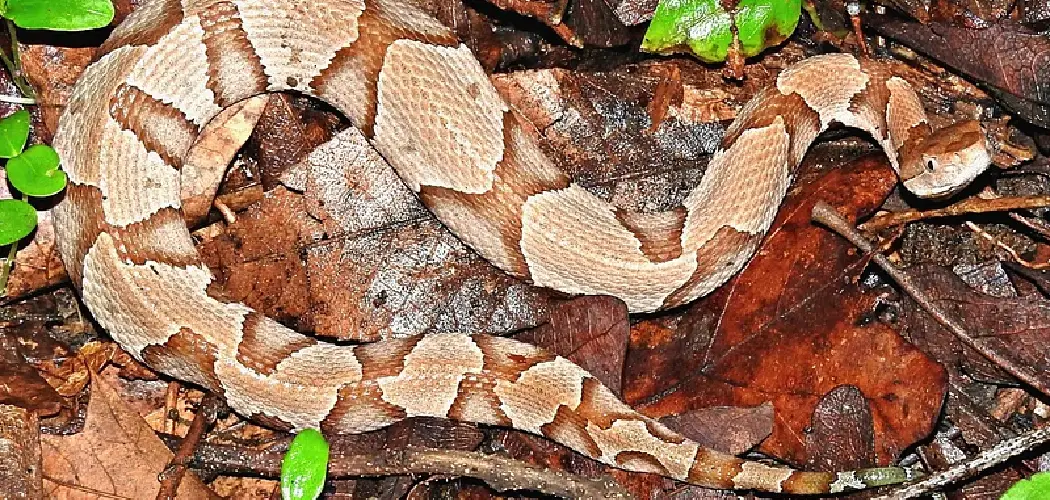Are you tired of finding copperheads in your yard? If stepping outside and encountering these venomous snakes has become too much to bear, it’s time to start putting a preventative plan in place.
Copperheads can be found all across the United States, and learning how to keep copperheads out of your yard is essential for both safety and peace of mind.
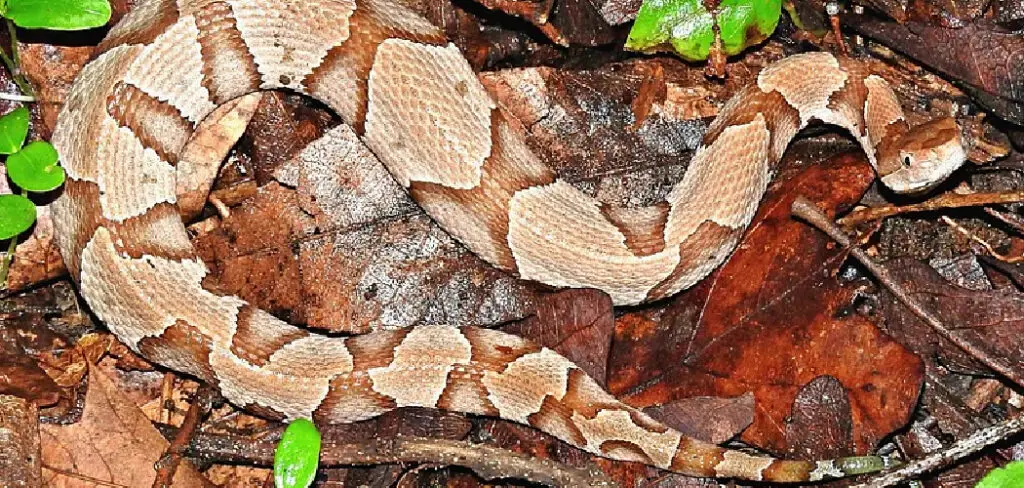
Copperheads are a type of venomous snake that is native to the United States. They typically prefer climates with mild winters and hot summers so they can be found in many regions across the country. These snakes are often found in wooded areas or near bodies of water, but they can also thrive in suburban neighborhoods.
In this blog post, we’ll walk you through some actionable steps that will help ensure you don’t have any unwelcome visitors with slithering surprise visits!
What Will You Need?
Before we get into the tips and tricks, let’s quickly go over some essential items you’ll need to keep copperheads out of your yard effectively:
- A sturdy fence or barrier to block off any potential entry points
- Pest control products designed explicitly for snakes
- Natural deterrents like cedar mulch or mothballs
Now that you have everything ready, here are some ways to keep copperheads out of your yard:
10 Easy Steps on How to Keep Copperheads Out of Your Yard
Step 1. Install a Snake Fence:
Start by installing a snake fence around your yard. A snake fence is a specialized fence designed with small holes to prevent snakes from being able to get through. The fence should be buried at least a foot underground and rise about two to three feet above ground.
This will prevent the copperheads from burrowing under or climbing over the fence. Make sure it encloses the entire perimeter of your yard and seal any gaps to create an impenetrable barrier.
Step 2. Eliminate Their Food Source:
Copperheads, like all snakes, are driven by their need for food. They feed primarily on small rodents, insects, and amphibians. By taking steps to manage these populations, you can make your yard less appealing to copperheads. Keep your outdoor spaces clean and free from clutter where these creatures might find shelter.
Use pest control measures to manage insects and rodents, and consider removing bird feeders, which can attract rodents. Remember, a yard without a readily available food source is much less appealing to a copperhead.
Step 3. Use Snake Repellents:
Snake repellents can be an effective tool in keeping copperheads at bay. These products contain ingredients that snakes find unpleasant, deterring them from entering your yard. Repellents may be synthetic, such as those containing naphthalene or sulfur, or natural, like clove and cinnamon oils.
Apply the repellent around the perimeter of your yard, near the house, and around any structures where snakes may seek shelter. Remember to reapply the repellent regularly, as environmental elements can diminish its effect.
Step 4. Remove Hiding Places:
Copperheads, like many other snakes, are shy and prefer to stay hidden. They often seek shelter in piles of leaves, stacks of firewood, and tall grasses. By keeping your yard tidy, you can remove these potential hiding spots and make it less inviting for these unwelcome guests.
Regularly rake up leaves, keep your grass mowed, and store firewood at least a foot off the ground and away from your house. Depending on your region, you may also need to be aware of other potential hiding places, such as rock walls or garden ponds.
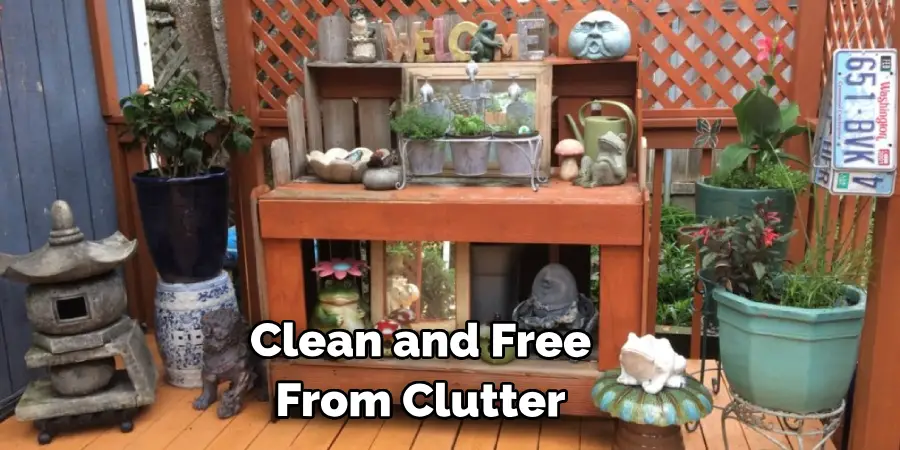
Step 5. Maintain Your Garden:
Apart from hiding places, copperheads are also attracted to areas with abundant prey. Your garden, with its plentiful insects and small mammals, can be a buffet for these snakes. Therefore, maintaining your garden is a crucial step in keeping copperheads out of your yard.
If you have a vegetable garden, ensure it is well-fenced and raised off the ground. Consider using insecticides to control insect populations, but be careful not to harm beneficial insects or the environment. Finally, avoid over-watering your plants; excess water can attract amphibians, which in turn can attract copperheads.
Step 6. Install Outdoor Lighting:
Copperheads are nocturnal creatures and prefer to navigate their surroundings in the dark. Well-lit yards can deter these snakes from slithering into your outdoor spaces. Install outdoor lighting around your yard, focusing on areas near structures and the perimeter.
Solar-powered garden lights can be a cost-effective and eco-friendly solution. Remember, the goal is to make your yard less appealing for these nocturnal visitors, and lights can play a significant role.
Step 7. Regularly Inspect and Seal Off Crevice, Cracks, and Gaps:
Copperheads, being small creatures, can easily sneak into your yard through cracks, gaps, and crevices in your fences, walls, or foundations. Regularly inspect these potential entry points and seal them off promptly.
You can use caulk, foam, or other appropriate materials to fill these gaps. Remember, even the most minor crack can provide an entry point for a copperhead. So, be thorough in your inspection and diligent in maintaining your barriers.
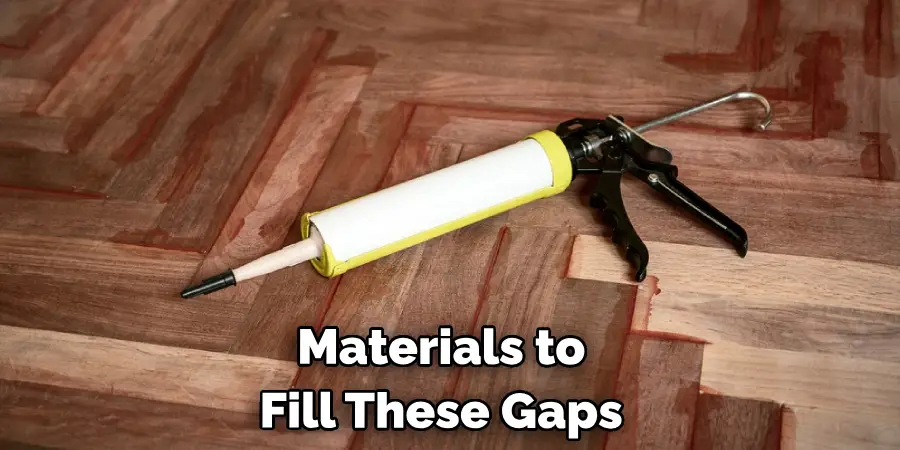
Step 8. Keep Pets Indoors at Peak Snake Activity Times:
Copperheads are most active during early morning and late afternoon. During these times, it’s best to keep your pets indoors to avoid any potential encounters.
Snakes can also be drawn to pet food left outside, so be sure to feed your pets indoors or promptly remove any leftover food. Additionally, keeping pets indoors or on a leash during these hours can help ensure they do not disturb any snakes that may be residing on your property.
Step 9. Educate Your Family:
One of the most crucial steps in keeping copperheads out of your yard is to educate your family members, especially children. Teach them about the dangers of interacting with snakes and how to identify a copperhead. Encourage them to notify an adult immediately if they spot a snake. Additionally, ensure they know the importance of avoiding tall grass, piles of leaves, or other places where snakes might hide. An informed and aware family can be a significant step towards a snake-free yard.
Step 10. Consult a Professional:
If, despite all your efforts, you still encounter copperheads in your yard, it might be time to call in a professional. Wildlife control or pest management experts can safely and humanely remove the snake from your property. They can also provide additional tips and strategies for preventing future snake encounters.
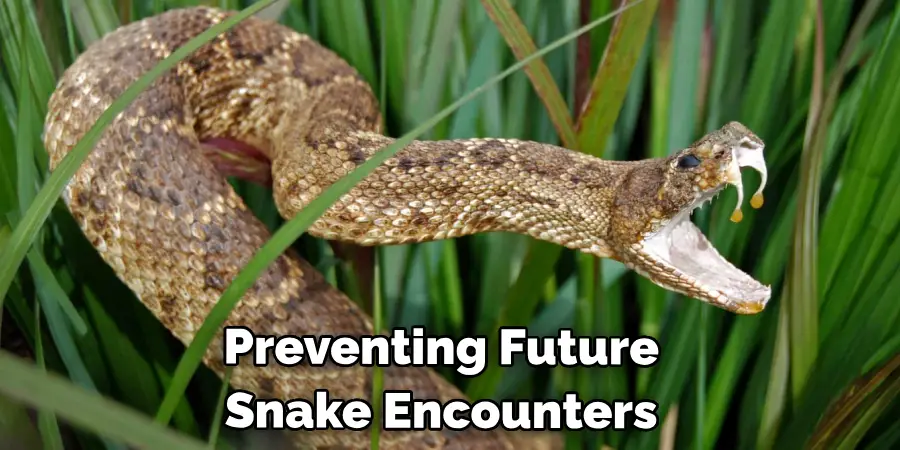
Remember, dealing with venomous snakes like copperheads can be dangerous, so it’s best to let trained professionals handle the situation.
By following these steps, you can create a safer and more secure environment for your family and pets.
5 Additional Tips and Tricks
- If you have a pond or swimming pool in your yard, cover it at night. Water sources are desirable to snakes and can become a breeding ground for them.
- Remove clutter from your yard. Copperheads like to hide in wood piles, leaf litter, and other areas where they can easily camouflage themselves.
- Trim your bushes and shrubs regularly. Snakes like to hide in overgrown areas, so keeping your yard tidy can discourage them from entering.
- Keep bird feeders away from your home. Seeds attract small prey like mice and rats, a food source for snakes. By removing these potential meals, you can make your yard less appealing to copperheads.
- Educate yourself on the signs of a copperhead presence. Knowing what to look for can help you identify and remove potential threats before they become a problem.
Once you have successfully implemented these additional tips and tricks, your yard should become a much less attractive place for copperheads.
5 Things You Should Avoid
- Avoid Leaving Pet Food Outside: Pet food and water attract rodents, which, in turn, attract snakes. By removing these, snakes will be less likely to visit your yard.
- Don’t Let Your Yard Grow Wild: Tall grass and overgrown plants provide excellent hiding places for copperheads. Regular maintenance reduces these potential hideouts.
- Don’t Create Hideouts: Wood piles, compost heaps, and clutter can become homes for snakes. Store wood and compost in sealed containers, and keep your yard tidy.
- Avoid Using Mulch: Copperheads love the moisture and cover that mulch provides. Consider using alternative ground covers, like stone or gravel.
- Don’t Handle Snakes: If you encounter a copperhead in your yard, don’t try to remove it yourself. This puts you at risk of a bite. Instead, call a professional snake removal service.
By avoiding these practices, you will discourage copperheads from calling your yard home.
Does Ammonia Keep Snakes Away?
There is a common belief that ammonia can be used to keep snakes away. However, there is no evidence to support this claim, and it may even be environmentally harmful.
Ammonia has a strong smell that can irritate and confuse snakes. Some people believe that by placing rags soaked in ammonia around their yard, they can deter snakes from entering.
However, the ammonia quickly dissipates and loses its potency, making it an ineffective solution.
Not only is this method not proven to work, but it can also be detrimental to the environment. Ammonia runoff from rags or other sources can harm plants and wildlife in your yard. It is best to avoid using ammonia as a snake deterrent.
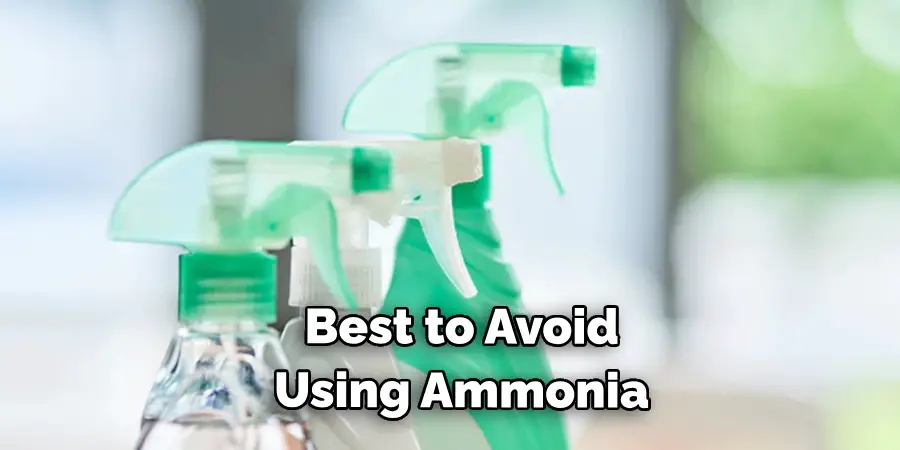
Conclusion
In conclusion, taking the appropriate steps and using a combination of prevention methods are key to keeping copperheads out of your yard. Minimize habitat opportunities by mowing regularly, raiding any areas that could attract rodents around your property, and cleaning up any debris or fallen tree branches that can provide hiding places for copperhead snakes. Utilize fencing to keep them out as much as possible, and if you come across them, pay attention to their behavior to determine if they are venomous before handling them.
Lastly, always check shoes and articles of clothing for snakes before putting them on since leaving them in a pile creates a perfect place for copperheads to hide. With these tips on how to keep copperheads out of your yard, your yard will be off limits for copperheads so that you can enjoy it safely without fear!
About
Outdoor Fixes is a distinguished figure in the world of Diy design, with a decade of expertise creating innovative and sustainable Diy solutions.
His professional focus lies in merging traditional craftsmanship with modern manufacturing techniques,
fostering designs that are both practical and environmentally conscious. As the author of diy,
outdoorfixes delves into the art and science of outdoorfixes-making, inspiring artisans and industry professionals alike.
Education RMIT University
(Melbourne, Australia) Associate Degree in Design (Outdoor Fixes) Focus on sustainable design, industry-driven projects,
and practical craftsmanship. Gained hands-on experience with traditional and digital manufacturing tools, such as CAD and CNC software.
Nottingham Trent University
(United Kingdom) Bachelor’s in outdoorfixes.com and Product Design (Honors) Specialized in product design with a focus on blending creativity with production
techniques. Participated in industry projects, working with companies like John Lewis and Vitsoe to gain real-world insights.
Publications and Impact
In diy, Outdoor Fixes his insights on indoor design processes, materials, and strategies for efficient production.
His writing bridges the gap between artisan knowledge and modern industry needs, making it a must-read for both budding designers and seasoned professionals.

